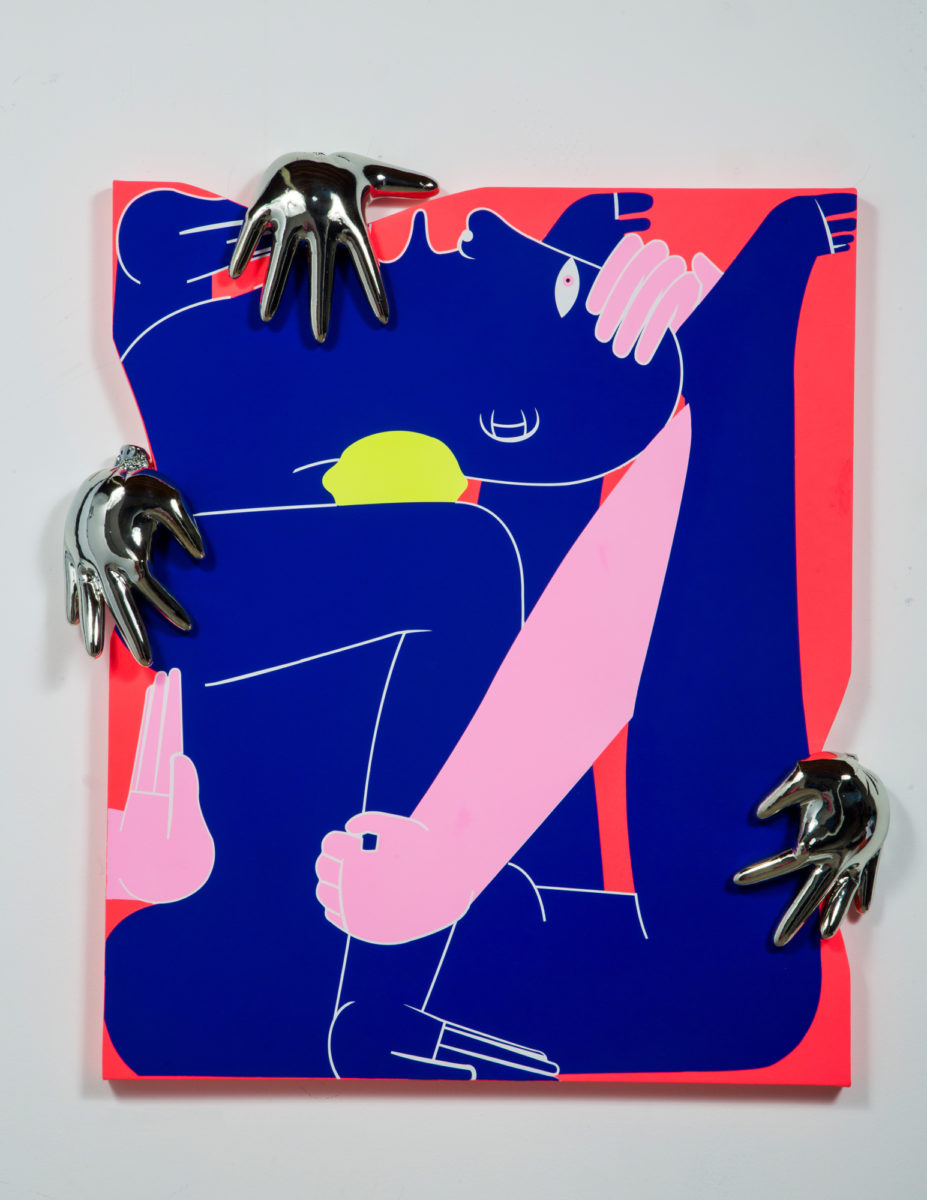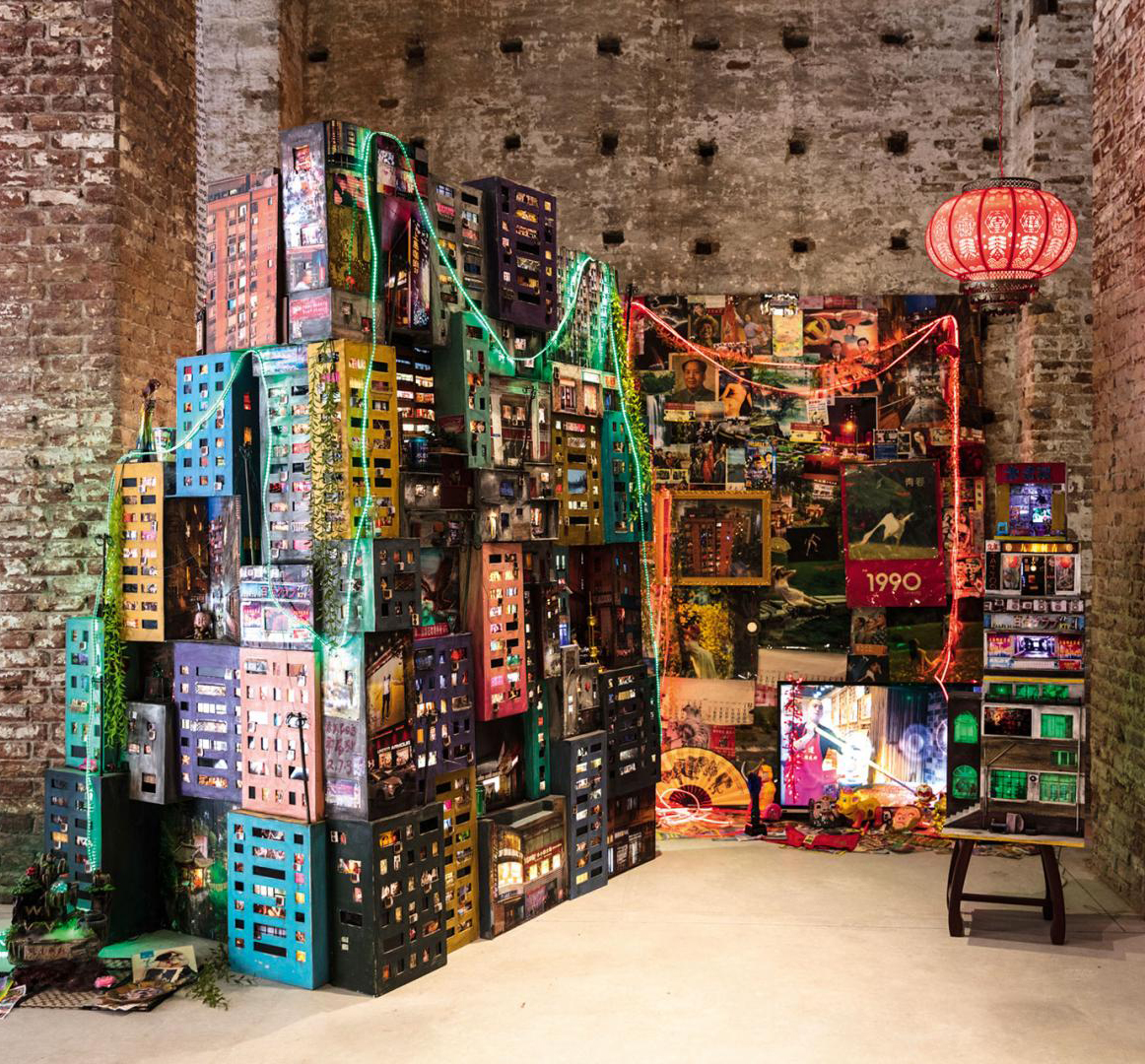
Blending two- and three-dimensional forms, Mark Whalen creates cerebral and absurd arrangements of the human body. Whether stacking vibrant heads or using sculpted hands to sculpt the very shapes of canvases, there’s a metatextual component in tackling the act of creating art itself.




“The generalized, gender-fluid figures who appears in the pictorial scenes and whose body parts are featured in the sculptures is not Whalen himself — or it’s not only him,” Over the Influence has said of his work. “The figure is an avatar for the broad spectrum of human experience. The seductive richness of the saturated palette and alluring surface treatments evokes a range of emotional responses to that life; and the ordinary found objects and minerals that surround, support, and oppress the persons in the compositions represent the profound absurdity of basically everything.”
Find more of Whalen’s work on his site.






 Tracey Snelling's installations are immersive blends of sculpture, video, and photography, her makeshift buildings containing surprises in their windows and corners. Her recent, massive construction at the 58th Venice Biennale reflects on her experiences living in China, in particular. Videos shown within offer peeks into her experiences with friends; structures are inspired by actual places she visited.
Tracey Snelling's installations are immersive blends of sculpture, video, and photography, her makeshift buildings containing surprises in their windows and corners. Her recent, massive construction at the 58th Venice Biennale reflects on her experiences living in China, in particular. Videos shown within offer peeks into her experiences with friends; structures are inspired by actual places she visited. We are what we eat- are we also what we play with? Australian artist
We are what we eat- are we also what we play with? Australian artist  Ceramicist
Ceramicist 